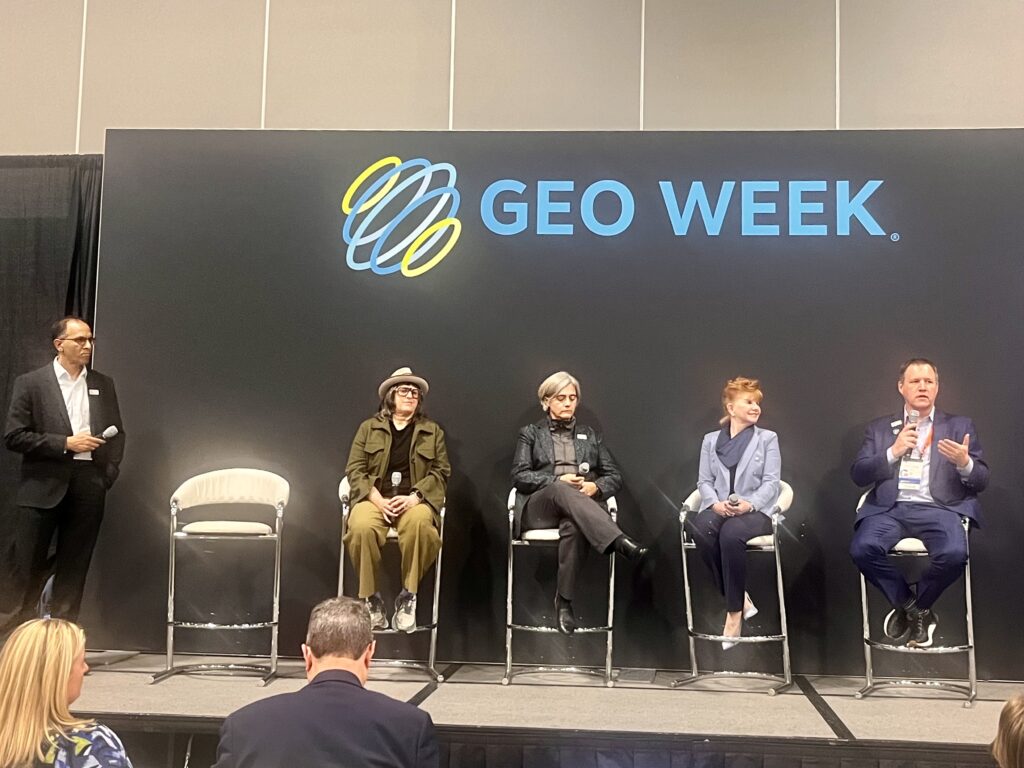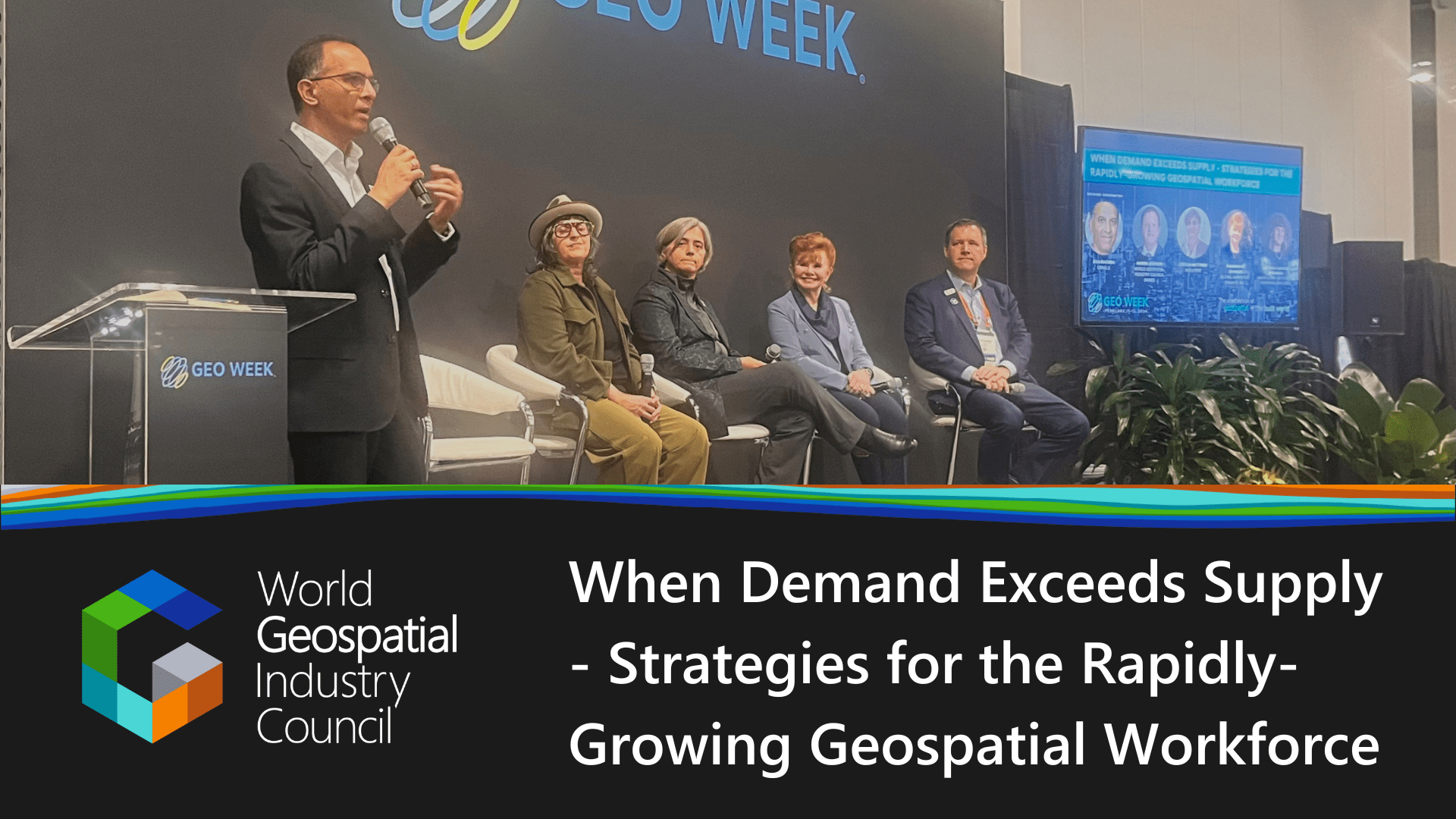Within the geospatial industry, there’s a glaring issue: a wide talent gap limiting innovation and speed of growth. As the industry braces for a new era of expanded demand for geospatial services and solutions, this gap continues to widen, and the demand for a workforce characterized by technical acumen, adaptability, and innovative thinking continues to skyrocket.
The Call for a Multidimensional Geospatial Workforce
The need for an innovative and technically proficient workforce has never been more pronounced. In a panel on the geospatial workforce hosted by WGIC at Geo Week, Dr. Shelia Lakshmi Steinberg from UMass Global Institute for Geospatial Education underscored this pressing need.

To meet the demands of a rapidly evolving industry, geospatial professionals must bridge the talent gap by balancing their technical skills with effective communication, team spirit, analytical and problem-solving skills, and systems thinking. This balance is crucial for developing geospatial solutions in urban planning, environmental conservation, or developing digital twins.
Bridging the Industry and Academia Collaboration Gap
The disconnect between graduates’ capabilities and the industry’s needs is a growing concern. WGIC’s Aaron Addison’s observation about the industry’s substantial needs due to emerging technologies such as artificial intelligence (AI), machine learning (ML), augmented/virtual reality (AR/VR) and their application along with geospatial technology in building the Metaverse digital twins highlights a critical issue.
To address this gap, educational institutions must reassess their curricula to ensure graduates possess the optimal blend of the latest technical expertise and a strong emphasis on hands-on skills necessary to tackle real-world challenges once they enter the industry.
Cultivating Industry-Academia Synergy to Fill the Geospatial Talent Gap
Some successful collaborations between academia and industry can be taken as a model for the future. Global Marketing Insights’ Shawana Johnson’s recount of the program developed with the U.S. Army Pacific and the University of Chaminade is a prime example of how targeted educational efforts can swiftly transition students into valuable workforce contributors. Such partnerships enhance students’ practical skills and ensure that academic programs stay abreast of industry trends and needs. The gap between academic preparation and industry requirements can be effectively bridged by creating more opportunities for students to engage in real-world projects and internships.
Navigating the Technological Landscape
The shift towards web-based GIS and other digital platforms requires a geospatial workforce adept with the latest technological advancements. Woolpert’s Cecilia Hattingh’s insights into the transition to web-based GIS underscore the importance of preparing students for the digital work environment. Internships play a critical role in this preparation, offering students a firsthand look at the industry’s technological landscape and the challenges they will face. Educational institutions must, therefore, prioritize partnerships with industry leaders to offer students these invaluable learning opportunities.
Charting a Path Forward
The journey towards bridging the talent divide in the geospatial industry underscores a critical need for concerted action. A multifaceted approach is essential to secure a future where the geospatial industry continues to drive technological innovation and societal progress. This approach entails enhancing educational curricula to align with industry needs, fostering deeper collaborations between academia and industry, and ensuring the workforce can navigate and leverage the latest technological advancements. By committing to these strategies, the geospatial industry can overcome current challenges and play a pivotal role in shaping tomorrow’s digital landscape.


